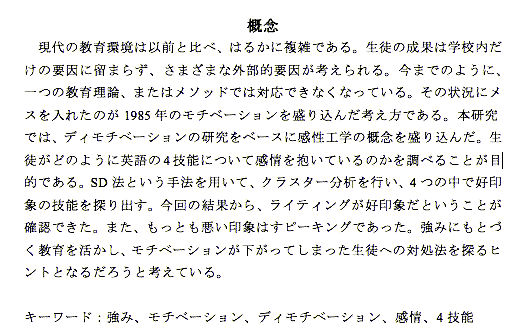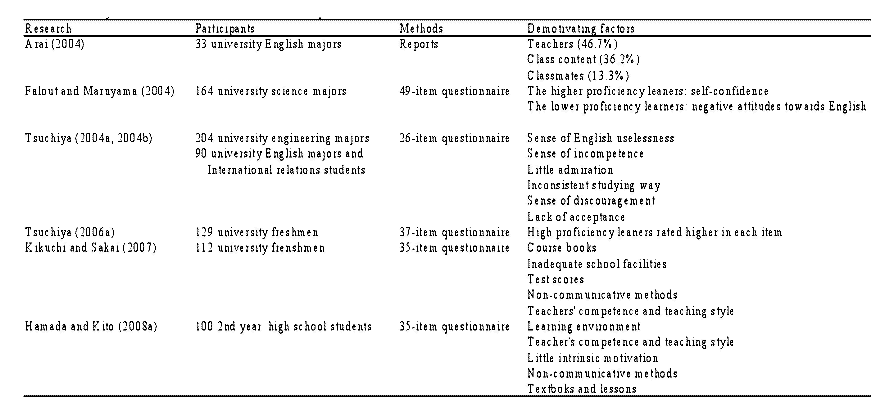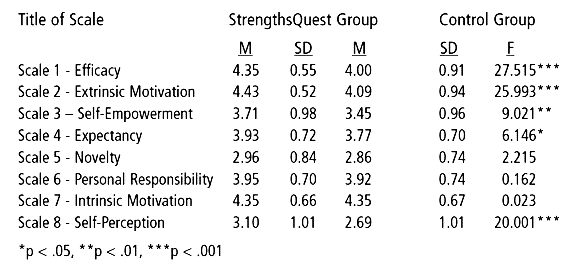May 10 - 11, 2008. Kyoto, Japan: Doshisha University Shinmachi Campus. (pp. 8 - 20)
Japanese high school students’ emotional ratings of the four skills:
by Kazuya Kito (Temple University Japan) & Yo Hamada (Yokote-Seiryo Gakuin)
|
| Abstract |
|
Since 1985, motivation has been considered a key facet of curriculum planning and problems underlying school education. In this study, some ideas regarding demotivation are combined with insights from a field known as emotional science. The perception of 57 Japanese high school students of the four English language skills was investigated using a Semantic Differential Method developed by Osgood. The results of a 25-item questionnaire analyzed by a hierarchical cluster analysis procedure suggest that respondents tend to feel most favorable about reading activities, then listening. The greatest degree of anxiety and negative emotions tends to be associated with speaking activities. Based on insights regarding strength-based education proposed by Anderson, we hope to transform demotivated high school EFL students by emphasizing their strength in writing. Keywords: strength-based education, motivation, demotivation, EFL instruction, learner attitudes, four language skills  |






